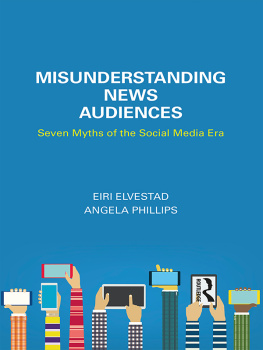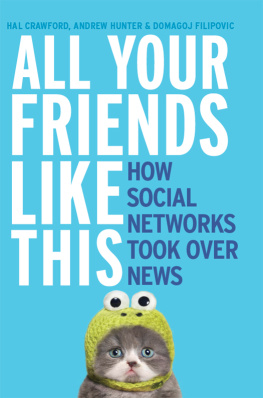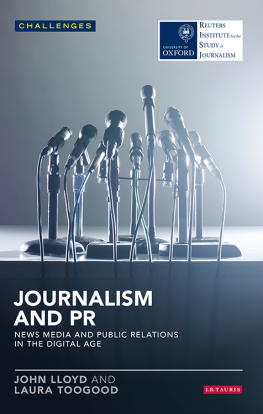Introduction
We freeze some moments in time. Every culture has its frozen moments,events so important and personal that they transcend the normal flowof news.
Americans of a certain age, for example, know precisely where theywere and what they were doing when they learned that PresidentFranklin D. Roosevelt died. Another generation has absolute clarityof John F. Kennedys assassination. And no one whowas older than a baby on September 11, 2001, will ever forget hearingabout, or seeing, airplanes exploding into skyscrapers.
In 1945, people gathered around radios for the immediate news, andstayed with the radio to hear more about their fallen leader andabout the man who took his place. Newspapers printed extra editionsand filled their columns with detail for days and weeks afterward.Magazines stepped back from the breaking news and offeredperspective.
Something similar happened in 1963, but with a newer medium. Theimmediate news of Kennedys death came for most viatelevision; Im old enough to remember thatheartbreaking moment when Walter Cronkite put on his horn-rimmedglasses to glance at a message from Dallas and then, blinking backtears, told his viewers that their leader was gone. As in the earliertime, newspapers and magazines pulled out all the stops to add detailand context.
September 11, 2001, followed a similarly grim pattern. Wewatchedagain and againthe awful events. Consumers ofnews learned the what about the attacks, thanksto the television networks that showed the horror so graphically.Then we learned some of the how and why as print publications and thoughtfulbroadcasters worked to bring depth to events that defied mere words.Journalists did some of their finest work and made me proud to be oneof them.
But something else, somethingprofound, was happening this time around: news was being produced byregular people who had something to say and show, and not solely bythe official news organizationsthat had traditionally decided how the first draft of history wouldlook. This time, the first draft of history was being written, inpart, by the former audience. It was possibleit wasinevitablebecause of new publishing tools available on theInternet.
Another kind of reporting emerged duringthose appalling hours and days. Via emails, mailing lists, chatgroups, personal web journals all nonstandard news sources we received valuable context that the major American mediacouldnt, or wouldnt, provide.
We were witnessingand in many cases were part ofthefuture of news.
Six months later came another demonstration oftomorrows journalism. The stakes were far lowerthis time, merely a moment of discomfort for a powerful executive. OnMarch 26, 2002, poor Joe Nacchio got a first-hand taste of thefuture; and this time, in a small way, I helped set the table.
Actually, Nacchio was rolling in wealth that day, when he appeared atPC Forum, an exclusive executive conference in suburban Phoenix. Hewas also, it seemed, swimming in self-pity.
In those days Nacchio was the chief executive of regional telephonegiant Qwest, a near-monopoly in its multistatemarketplace. At the PC Forum gathering that particular day, hewas complaining about difficulties in raising capital. Imagine:whining about the rigors of running a monopoly, especially whenNacchios own management moves had contributed tosome of the difficulties he was facing.
I was in the audience, reporting in something close to real time bypublishing frequent conference updates to myweblog, anonline journal of short web postings, via a wireless link theconference had set up for attendees. So was another journalistweblogger, Doc Searls, senior editor of Linux Journal, a softwaremagazine.
Little did we know that the mornings events wouldturn into a mini-legend in the business community. Little did I knowthat the experience would expand my understanding of how thoroughlythe craft of journalism was changing.
One of my posts noted Nacchios whining, observingthat hed gotten seriously richer while his companywas losing much of its market valueanother example of CEOsraking in the riches while shareholders, employees, and communitiesgot the shaft. Seconds later I received an email from Buzz Bruggeman,a lawyer in Florida, who was following my weblog andSearlss from his office in Orlando.Aint Americagreat? Bruggeman wrote sarcastically, attaching ahyperlink to a Yahoo! Finance web page showing that Nacchio hadcashed in more than $200 million in stock while hiscompanys stock price was heading downhill. Thisinformation struck me as relevant to what I was writing, and Iimmediately dropped this juicy tidbit into my weblog, with acyber-tip of the hat to Bruggeman. (Thanks, Buzz,for the link, I wrote parenthetically.) Doc Searlsdid likewise.
Around that point, the audience turnedhostile, wrote Esther She called the blogginga second conference occurring around, through, andacross the first.
Why am I telling this story? This was not an earth-shaking event,after all. For me, however, it was a tipping point.
Consider the sequence of news flow: a feedback loop that started inan Arizona conference session, zipped to Orlando, came back toArizona and ultimately went global. In a world of satellitecommunications and fiber optics, real-time journalism is routine; butnow we journalists had added the expertise of the audience.
Those forces had lessons for everyone involved, including thenewsmakerNacchiowhohad to deal with new pressures on the always edgy, sometimesadversarial relationship between journalists and the people we cover.Nacchio didnt lose his job because we poked at hisarrogance; he lost it, in the end, because he did an inadequate jobas CEO. But he got a tiny, if unwelcome, taste ofjournalisms future that morning.
The person in our little story who tastedjournalisms future most profoundly, I believe, wasneither the professional reporter nor the newsmaker, but Bruggeman.In an earlier time, before technology had collided so violently withjournalism, hed been a member of an audience. Now,hed received news about an event without waitingfor the traditional coverage to arrive via newspapers or magazines,or even web sites. And now hed become part of thejournalistic process himselfa citizen reporter whose knowledgeand quick thinking helped inform my own journalism in a timely way.
Bruggeman was no longer just a consumer. He was a producer. He wasmaking the news.
This book is aboutjournalismstransformation from a 20th century mass-media structure to somethingprofoundly more grassroots and democratic. Its astory, first, of evolutionary change. Humans have always told eachother stories, and each new era of progress has led to an expansionof storytelling.
This is also a story of a modern revolution, however, becausetechnology has given us a communications toolkit that allows anyoneto become a journalist at little cost and, in theory, with globalreach. Nothing like this has ever been remotely possible before.
In the 20th century, making the news was almost entirely the provinceof journalists; the people we covered, ornewsmakers; and the legions ofpublic relations and marketing people who manipulated everyone. Theeconomics of publishing and broadcasting created large, arrogantinstitutionscall it Big Media, though even small-townnewspapers and broadcasters exhibit some of thephenomenons worst symptoms.







